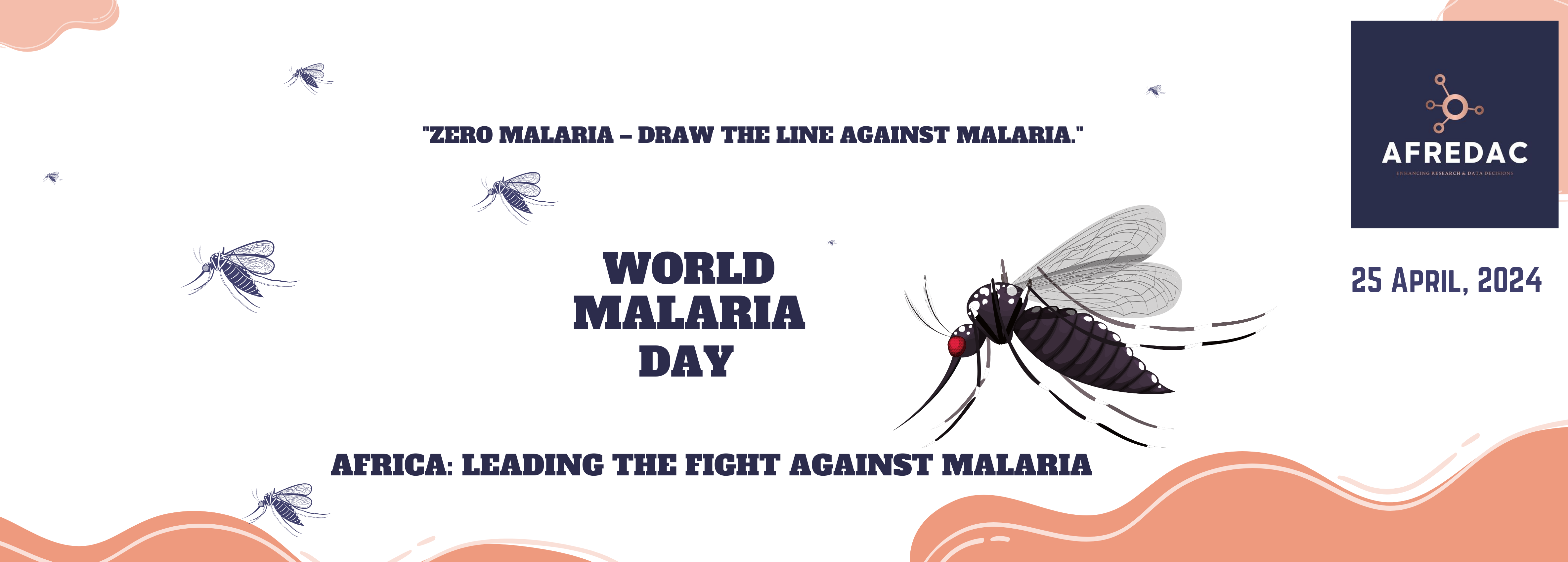World Malaria Day 2024: Meeting Zero Malaria Targets amidst Climate Change and the Looming Parasite Resistance!

Introduction
World Malaria Day, observed annually on April 25th, serves as a poignant reminder of the persistent threat posed by malaria, particularly in Africa. With Africa bearing a staggering 94% of malaria cases and 95% of related deaths globally, the region remains at the forefront of the fight against this disease. This burden is further exacerbated by climate change, which is increasing the transmission of malaria and complicating efforts to eliminate the disease. In this blog post, we will explore the impact of climate change on malaria, exploring innovative strategies and interventions that underscore the continent’s commitment to overcoming this public health challenge.
Climate Change and Malaria
Climate change is worsening this burden, and the detection and expansion of artemisinin- (the main component in the antimalarial combination therapy) resistant strains in the East and Horn of African countries (Eritrea, Ethiopia, Uganda, Tanzania, Rwanda, and South Sudan) throw the goal of malaria elimination further than previously anticipated.
“Malaria is among the very climate-sensitive diseases. The temperature has risen for over 1.5 centigrade over the past few decades. The rise in temperature increases the transmissibility of the mosquitoes considerably, we need to come together to save our planet and our communities from malaria”.
 The long rainy seasons and floods increase water stagnancy, thus giving mosquitoes longer breeding time. Subsequently, hot and dry spells cause ponds, lakes, and swamps to dry into small stagnant water bodies where mosquitoes breed. For example, malaria surges have been observed after cyclones that have hit Mozambique recently (MMV report Climate change and malaria).
The long rainy seasons and floods increase water stagnancy, thus giving mosquitoes longer breeding time. Subsequently, hot and dry spells cause ponds, lakes, and swamps to dry into small stagnant water bodies where mosquitoes breed. For example, malaria surges have been observed after cyclones that have hit Mozambique recently (MMV report Climate change and malaria).
These changes are expected to increase the number of people exposed to Malaria in Africa from 427 Million to 461 Million in 2040 (Ermet et al., 2013).
Also, these climate changes tend to disrupt health infrastructures, making accessible areas inaccessible and the inaccessible ones even more inaccessible due to disrupted roads, hospital buildings, etc. Health financing dedicated to malaria is shifted to address adverse climatic disasters. All these are expected to add 60,000 malaria deaths yearly.
What is Africa Doing?
In response to these climatic shifts and the looming drug resistance, African nations are refining their approach towards malaria elimination.
Efforts are being intensified to improve surveillance systems, strengthen health infrastructure, and promote community-based initiatives.
Recently, DHIS2, a widely used data system in healthcare settings worldwide, announced a new application that is considering integrating climate-health-related data, which will be vital in responding to malaria. DHIS2 has also been tested to support genomic surveillance of resistant strains in South Africa.
Some African countries, such as Mozambique, Rwanda, and Malawi, are already in the pilot stage of including climate-health-related data in DHIS2, and hopefully, more, including Tanzania and others, will follow.
Innovations in vector control, like genetically modified mosquitoes and using drones to map and treat high-risk areas, are promising. Moreover, expanding malaria vaccine trials offers a glimmer of hope for a more robust preventive mechanism.
Recently, the WHO also approved two vaccines, RTS,S, and R21, for rollout in malaria-endemic countries. More than 2 million children in pilot implementation countries, namely Ghana, Kenya, and Malawi, have already been vaccinated with the RTS,S and Cameroon became the first country to start the large-scale rollout of the approved vaccines. In October 2023, WHO said there is an overwhelming demand for the vaccines, and the available supply is still limited.
However, the journey is fraught with challenges. The threat or vector, diagnostic and antimalarial resistance, which are exacerbated by the current climate crisis, threatens the reversal of much of this progress. Limited resources and the need for greater international cooperation and funding are significant barriers.
Nonetheless, there are opportunities for synergistic efforts that combine malaria control with climate adaptation strategies, ensuring more resilient health systems and communities.
The road ahead
To address the challenges posed by climate change in the fight against malaria, it is important to consider, among other things, the following:
- Improve Surveillance and Data Integration:
Enhance surveillance systems to monitor malaria trends and include climate-health-related data. Integrating such data can help anticipate and respond to the increased risk of malaria due to climate change. This can be facilitated through technological solutions like the DHIS2 application and the effective use of malaria scorecard tools for action and accountability.
- Strengthen Health Infrastructure:
Invest in strengthening the healthcare infrastructure to withstand the impacts of climate change. This includes ensuring that health facilities are equipped to handle an increase in malaria cases following climate events like flooding and to provide care to displaced communities. In addition, all sectors must collaborate in response to the impact of climate change on malaria as the entire health system building blocks, such as infrastructure, workforce, service delivery, finance, information technology, supply chain, and governance, are highly concerned.
- Community-Based Initiatives:
Promote community engagement and education to ensure that people are aware of the risks and the preventive measures they can take against malaria. Mobilise community action for environmental management to reduce mosquito breeding sites, particularly after extreme weather events.
- Innovations in Vector Control:
Expand on the current vector control measures and continue researching and deploying innovative vector control methods, such as genetically modified mosquitoes, drones for mapping and treating high-risk areas, and expanding access to treated mosquito nets and indoor residual spraying.
- Expand Access to Malaria Vaccinations:
Accelerate the rollout of newly approved malaria vaccines such as RTS,S, and R21. Support the expansion of vaccine trials and distribution to ensure widespread coverage, particularly in high-risk areas. The vaccines can be a great complementary tool towards malaria elimination as they both target the most affected population of children under the age of five.
- Develop and deploy early warning systems to monitor antimalarial resistance:
Enhance surveillance systems to monitor antimalarial resistance by linking current malaria surveillance with genomic data for prompt action. These systems should be incorporated into national malaria programmes and decision-making. There is a limited list of antimalaria drugs, so monitoring their efficacy and maximising their potential might be the major strategy at the moment.
This article was written with the contribution of






Responses